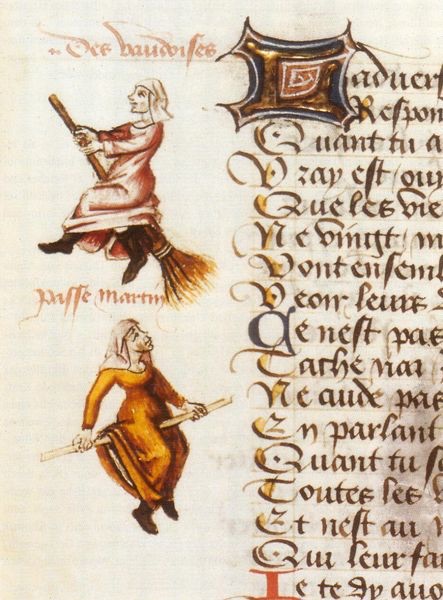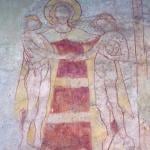 This marginal illustration comes from Le champion des dames (A Defense of Women) by Martin Le France, 1451. Martin was secretary to both Antipope Felix V and Pope Nicholas V. His work is a 24,000-verse (!) poem extolling the virtues of women, but also condemning heresy and corruption.
This marginal illustration comes from Le champion des dames (A Defense of Women) by Martin Le France, 1451. Martin was secretary to both Antipope Felix V and Pope Nicholas V. His work is a 24,000-verse (!) poem extolling the virtues of women, but also condemning heresy and corruption.
The witches are identified Vaudois, or Waldensians, who were accused of practicing witchcraft and celebrating the witch’s Sabbath. Flight was one of the powers given to demons and their minions, and thus was often associated with evil.
The art is interesting because it’s part of a shift from depicting witches demonically or sexually, to showing them as simple women in everyday clothes.
Why the broom? The internet is full of very silly theories with little historical grounding, the most commonly repeated being that brooms were used to apply flying ointments to the nether regions of the witch. Go ahead and take a moment to imagine that. I’ll wait. The flying ointment part is real. The awkward and painful applicator? Not so much.
We’re also told that it stems from the testimony of male witch Guillaume Edelin in 1453, which was two years after this manuscript was created. So, we can stop blaming poor Guillaume any time now.
I prefer simple answers: as witches start to be depicted as more ordinary, they’re given a prop to indicate their commonplace, feminine nature. What’s more ordinary than a housewife’s broom?
The witch, it tells us, is not always discernible by outward appearances. What does evil look like? It looks like us. Or, in the case of medievals, like that annoying woman next door.











